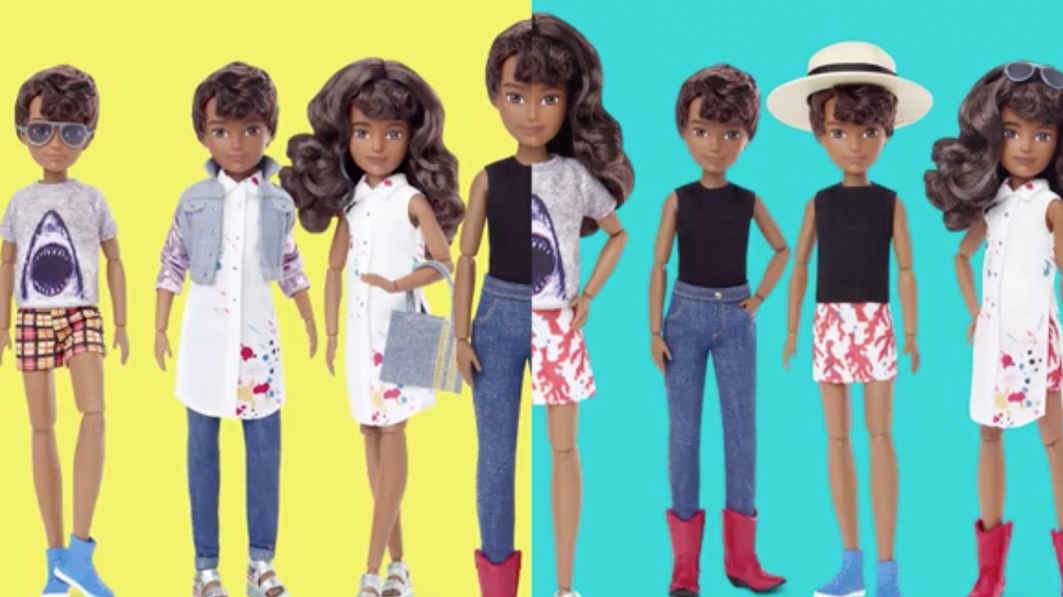Mattel, the maker of the Barbie doll, has announced a new line of “gender neutral” and customizable dolls. It is an attempt to create a doll line “free of labels,” but instead it is just another beloved childhood memory destroyed by companies desperate to appease the radical left.
As a child, I loved Barbie dolls. From the yearly Christmas Barbie to the My Fair Lady Collectable Barbie Dolls to everything in-between, Barbie was an integral part of my childhood. In fact, in our family my Dad still calls any overly girly mess “a Barbie explosion” decades after an actual explosion of Barbie paraphernalia was no longer a daily occurrence.
In a desperate bid to attract customers, Mattel, like seemingly so many other companies, has taken the plunge and embraced the policies of the radical progressive Left. This new line of dolls is designed to embrace “gender bending,” with the advertising saying, “Toys will be toys. Dolls are for kids.”
“Toys are a reflection of culture and as the world continues to celebrate the positive impact of inclusivity, we felt it was time to create a line of dolls free of labels,” Kim Culmone, Senior Vice President of Mattel Fashion Doll Design, said. “Through research, we heard that kids don’t want their toys dictated by gender norms. This line allows all kids to express themselves freely which is why it resonates so strongly with them. We’re hopeful Creatable World will encourage people to think more broadly about how all kids can benefit from doll play.”
If that’s the business strategy going forward, it doesn’t sound promising and frankly I doubt the research she’s received is remotely accurate. Girls like Barbie, in part, because she is girly, fashionable and fun. If they want to change her hair and make it shorter, like they do with the dolls in this collection, that’s usually something that happens naturally when a little brother or sister decides that scissors are fun and want to test out their hairstyling skills.
But that’s no longer the case. Instead, adults are imposing their views about society and gender on children. The dolls in this so called “Creatable World” collection have a unique look. The dolls appear younger than the adult Barbie, and the faces are a mix of male and female characteristics. Most appear to look more like boys than girls, and so dressing them up in overly feminine clothing looks rather odd, especially when they add on the wig to make the hair longer (for one in particular, it looks quite strange). They even have a boy playing with two of the dolls as part of the advertisement.
Now I know that Mattel and the Barbie brand have struggled in recent years, but it’s unlikely that creating a line of gender bending dolls is going to continue growing the brand in a positive direction.
Barbie was successful not because she had a particular career, as alluded to in the “Imagine the Possibilities” commercial, or her body type, but due to her image as the epitome of girliness. One of the great tragedies of my childhood is that my sister was accidentally given the Babysitter Skipper Barbie doll, with three babies that would Velcro to her sweater, instead of me. Okay, that’s probably a little dramatic but I still remember how disappointing it was to lose out on having Babysitter Skipper.
I didn’t question the doll’s femininity or her role as a babysitter. I was probably looking forward to the time where I would be old enough to babysit myself. The Babysitter Skipper Barbie doll I wanted now sells for around $80 in box online. Decades later and she’s still popular. In many ways, it was a simpler time where there wasn’t really an agenda involved in children’s toys. There is a rather interesting Instagram page called @Barbiestyle. The page is modeled after fashion Instagram bloggers, and while everything is extremely cute and stylish, it isn’t designed for children but for Millennials.
That’s perhaps the greatest tragedy of this entire situation. Barbie is no longer designed for children, but for the adults that have embraced a particular ideology.
As a child, I don’t remember questioning the gender status of every doll or acting out my future career, I just played. Like any child, I used my imagination to create great characters, situations and fun, and it was a blast. I wish that these Mattel executives, instead of focusing on progressive politics and adult viewpoints, would focus on encouraging young girls to express themselves creatively.
Related resources:
Don’t Say This at Google: Men and Women Are Different
Focus on the Family: Transgender Resources
When Transgender Issues Enter Your World
Photo from Mattel






